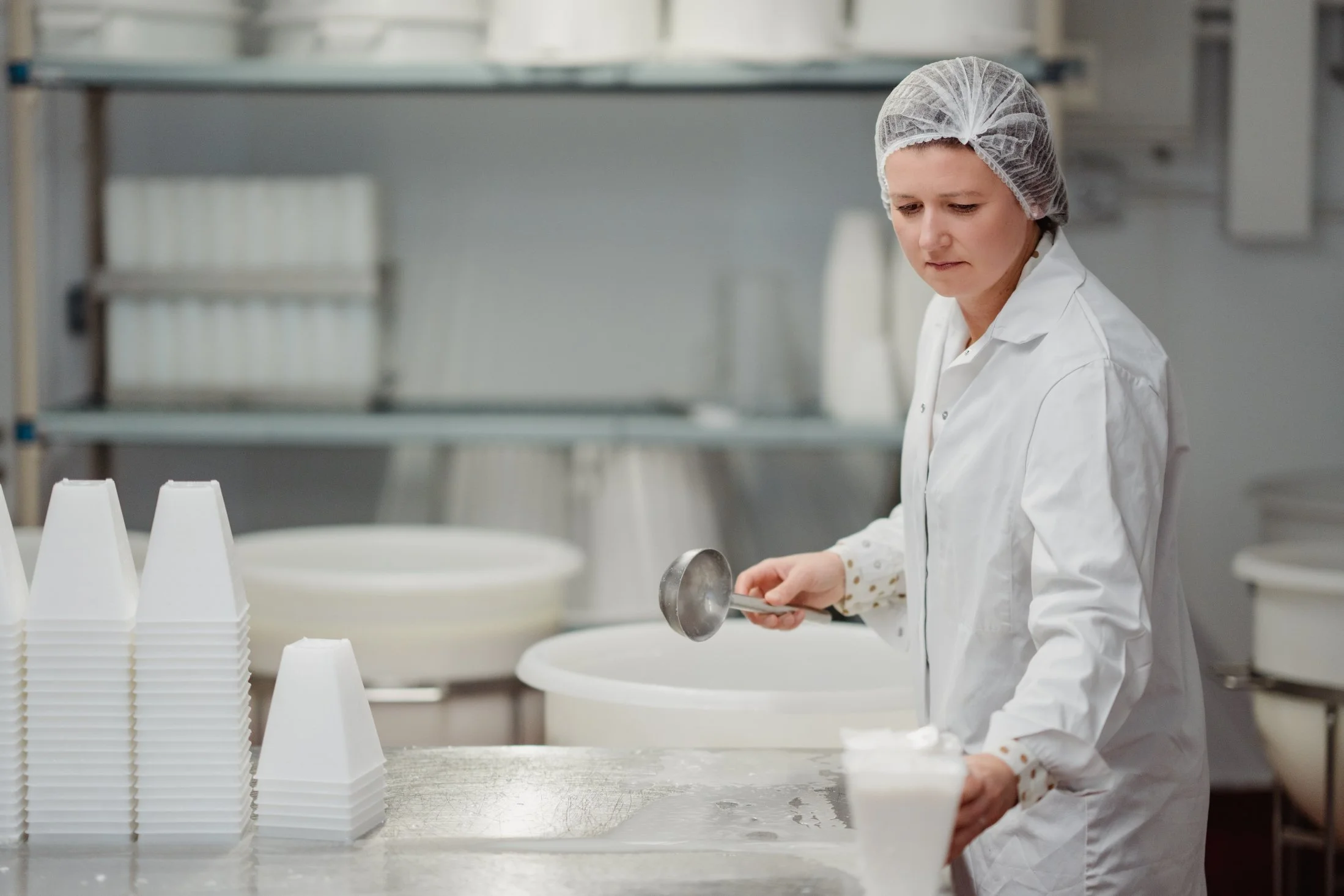TURNING OUR LANARKSHIRE MILK INTO FARMHOUSE CHEESE
Every batch tells a story
Making cheese is as much an art as it is a science. There’s no single recipe or manual that works for every cheesemaker, because every farm has its own personality — shaped by its animals, its land, and the people working with it. Our sheep and goats graze here in South Lanarkshire, and their milk changes subtly with the seasons, the weather, and even the mood of the herd. Over the years, we have learnt that no two days in the cheeseroom are ever exactly the same.
We make cheese seven days a week, all year round. For the best quality, we use only one day’s milk for each batch — usually an evening milking and a morning milking. The milk travels just a few metres from the parlour into the cheeserooms through a single pipe, with as little handling as possible. Less movement means less disruption to the milk’s natural structure, and better flavour in the final cheese. Once inside, the milk is gently warmed, and we add starter cultures to begin the acidification process.
Although we have been making cheese for over 40 years, we never stop learning. In fact, the longer I’ve been doing this, the more I realise how much there is still to understand. Milk is a live product — it changes every single day. Sometimes the variations are small, sometimes they are dramatic. The reasons can be anything from the weather and the quality of the grass to factors I cannot fully explain.
And because our cheeses mature slowly, it can take months before we see the results of even the smallest tweak. Lanark Blue is graded at around three weeks, while Corra Linn is not graded until four to six months — meaning it can be a long wait before we know if a change has made the cheese better, worse, or simply different.
Trial, error, and patience
There is a lot of trial and error involved in farmhouse cheesemaking. Some of our most popular cheeses today came about through happy accidents — a slight change in timing, a different stirring speed, or even a cooler-than-usual day in the make room. Other times, we have spent weeks testing an idea, only to decide it is not quite right and go back to the drawing board.
That is the beauty and the challenge of working with live milk. It keeps us humble, keeps us curious, and reminds us that every cheese we make is truly one of a kind.
The cheesemaking process:
• Milk is pumped directly from the parlour into the cheeserooms just metres away.
• Starter cultures are added, beginning the acidification process.
• Rennet is added, and curds are carefully cut and stirred.
• Curds are moulded, salted, and aged until they reach their best flavour and texture.
Every batch is the result of countless small decisions — guided by experience, shaped by the milk, and made here on the farm. That is what makes farmhouse cheese so special.
Try some of our cheese for yourself ↓








